Take a Behind-the-Scenes Tour of Netflix’s ‘Grace and Frankie’
http://decor-ideas.org 06/02/2015 03:13 Decor Ideas
In the new Netflix series Grace and Frankie, Jane Fonda (Grace) and Lily Tomlin (Frankie) have their lives suddenly upended when their husbands (who co-own a successful divorce law firm together) reveal they are gay and are leaving their wives for each other. Grace, a retired cosmetics executive, and Frankie, a hippie art teacher, have never seen eye to eye, but they begrudgingly decide to move in together and form an unlikely team. Set decorator Beauchamp Fontaine put together the three home sets used for the series, which debuted with 13 episodes in May and has just been renewed for a second season. Fontaine shares with us the motivations and inspirations behind each look.
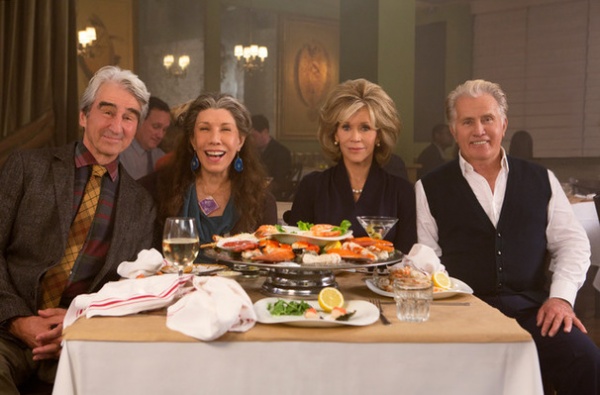
The stars of Grace and Frankie, from left to right: Sam Waterson (Sol), Lily Tomlin (Frankie), Jane Fonda (Grace) and Martin Sheen (Robert).

Grace and Frankie’s set decorator, Beauchamp Fontaine (seen here), was teaching French and cultural anthropology in New Orleans when a friend recommended her for a gig as an assistant set decorator for the 1994 film The Client.
“It might sound cliché, but I really felt as if I found my calling,” Fontaine says. “I love to get into a character’s head and try to discover how they would live. I’m always asking the writers and directors about character backstories to better understand their lives.”
In the past 20 years, Fontaine has worked on numerous feature films and television shows, including The Skeleton Key, Mud and Nebraska. For Grace and Frankie, she is responsible for decorating the three separate and very distinct sets featured in the series.

Robert and Grace Hanson’s Home
“Magazine perfect” is the design aesthetic of Robert and Grace Hanson’s family home, Fontaine says. The well-to-do former husband and wife have somewhat uptight personalities and are very conscious of their appearances. Fontaine believes this mentality would be transferred to their design decisions at home.
Sofa: custom design by Omega Cinema Props; sofa fabric: Circa, Knoll; coffee table: Holly Hunt; armchair: Corinne, Ethan Allen; area rug: custom design by Beauchamp Fontaine, made by S&J Biren; desk: antique, Omega Cinema Props; decorative items on shelves: Two’s Company; bar stools: Eleanor X-back, Safavieh; pendant lights over kitchen island: Restoration Hardware; flowers: Gilly
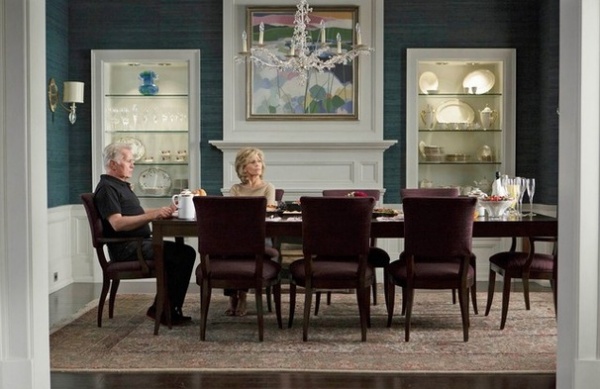
The elegant dining room includes aqua grass cloth wallpaper, dining chairs covered in aubergine velvet and a crystal chandelier.
“I imagine they would have had hired an interior designer for their home,” Fontaine says. “Everything is very pretty, but also a little impersonal and cold.”
Dining table: Barrymore, Ethan Allen; dining chairs: Drew, Ethan Allen; chair fabric: Rivington in aubergine, Knoll; area rug: Royal Kerman, Safavieh; chandelier: Pentimento, Currey & Company; sconce: Sebastian, Currey & Company; china: Lennox; wallpaper: by Kenneth James via Astek; art: Omega Cinema Props
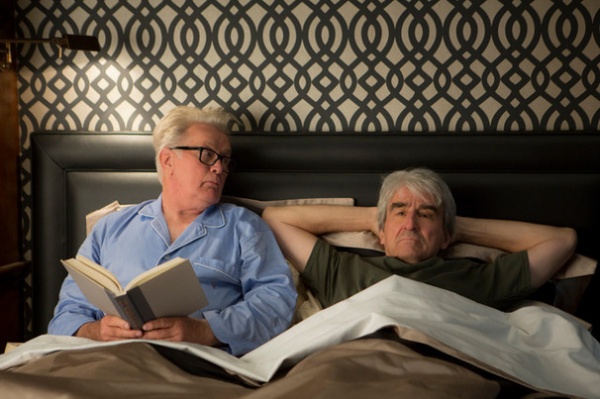
Robert and Grace kept separate bedrooms in their family home. After the husbands and wives separate, Sol moves into Robert’s bedroom (above). Fontaine says the style of Robert’s bedroom is a conscious nod to the Mad Men style of the 1960s.
Wallpaper: DuBarry in tan and black by Osborne & Little via Astek; headboard: leather, custom design by Beauchamp Fontaine; bedding: custom design by Beauchamp Fontaine with fabric by Duralee; task lamp sconce: Métier, Restoration Hardware
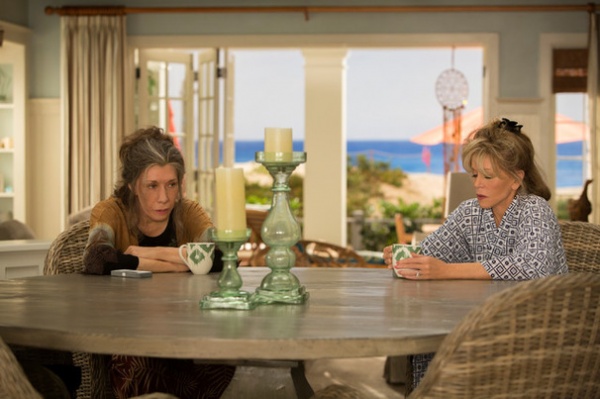
The Beach House
Though the beach house that Grace and Frankie move into after they separate from their husbands was originally bought by the two couples to be a shared vacation home, Fontaine believes that Grace would have had the larger say over the interior design decisions.
“I think the only way that Grace would have been comfortable with the arrangement was if she had control over the decor,” Fontaine says.
Dining table: Urban Colony; dining chairs: Williston, Palu; dream catcher (hanging in window): Precious & Peculiar, Etsy
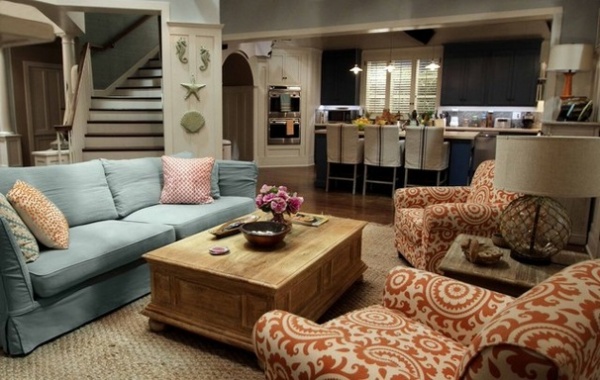
Coastal chic was the inspiration for the beach home. “It needed to be a place that could handle people tracking in sand from the beach and plopping down on furniture with wet swimwear,” Fontaine says. “Therefore, a lot of slipcovered furniture and sisal rugs made sense.”
Sofa, coffee and side tables: Dovetail; orange chairs: Winnetka, Wayfair; area rug: braided jute, Home Decorators Collection; glass lamp: Regina, Living Spaces; kitchen stools: Tess, Dovetail; pendant lights over kitchen island: Schoolhouse Electric & Supply
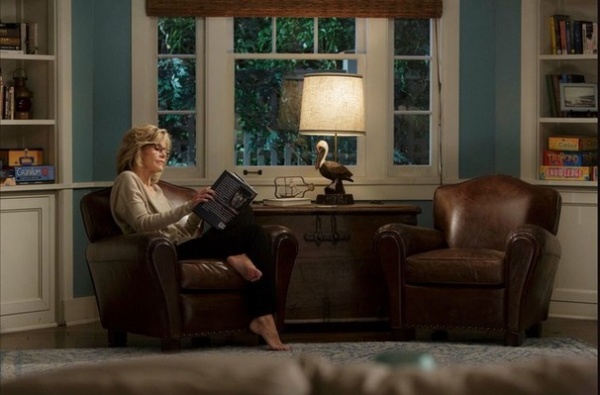
Soothing shades of blue that reflect the ocean outside, along with nautical-themed decor, were used throughout the home.
Leather club chairs: Caldicott, Dovetail; area rug: Shavonda, NuLoom; pelican lamp: Blane Modern Vintage, Etsy
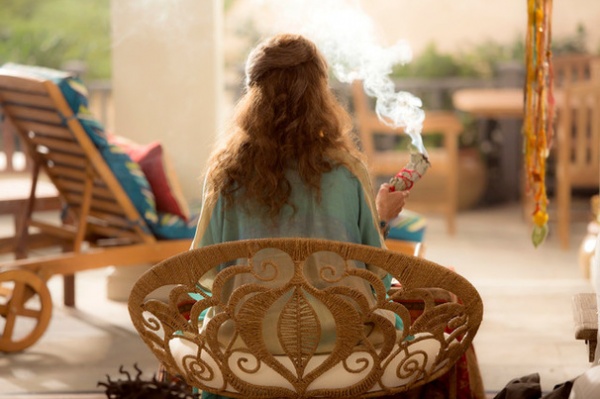
Though Fontaine felt that Grace would have had the biggest say over design decisions, little bits of Grace’s character shine through in items such as a whimsical outdoor chair.
Center chair: Lace Tiara, Wayfair; planters: Asian Ceramics
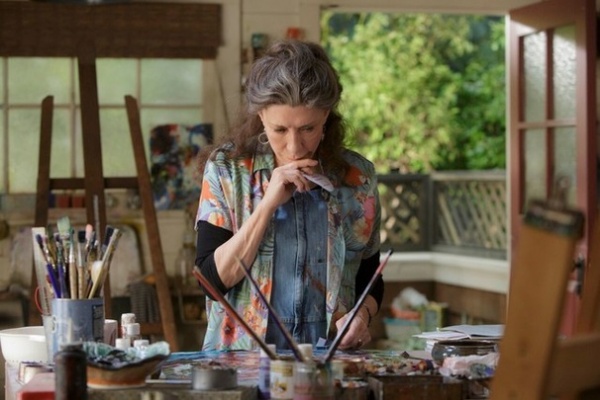
Frankie’s Art Studio
The one area of the beach house in which Frankie would have had complete control over the decor is her art studio, Fontaine says.
The art studio was originally envisioned as more of a pottery studio. “But since it’s a lot easier for an actor to pretend to paint than it is for them to pretend to proficiently roll clay on a wheel, it morphed into a painting studio instead,” the set decorator says.
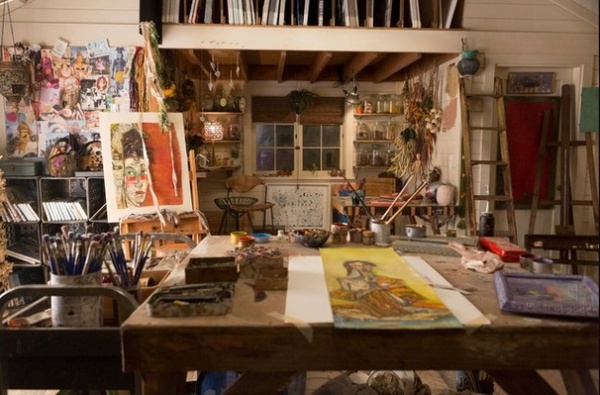
Fontaine’s father was a painter and always kept an art studio in any home that the family lived in. This experience helped her design an art studio complete with a mood board (above to the left) with images she imagined would serve as inspiration for Frankie’s art.
Paintings: Nancy Rosen, Ruth Modric, Mimi Herbert and Amy Holland; pottery: Robb Boldt, Bitter Root Pottery and Toros Pottery
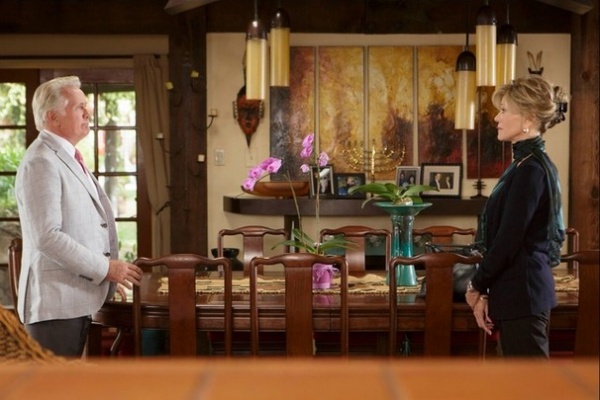
Sol and Frankie Bergstein’s Home
Fontaine believes that Sol and Frankie Bergstein’s home would have been inspired more by their travels and love of art and less by any desire to keep up with the latest style trends. Above, Robert and Grace have a tense meeting in Sol and Frankie’s dining room.
“I imagine that they bought most of their furniture when Sol first started making money and would have never replaced it,” Fontaine says.
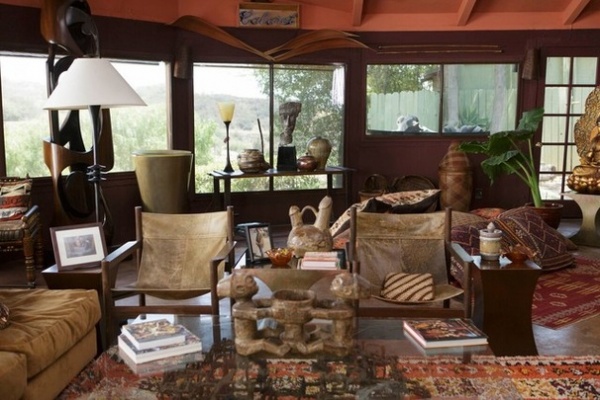
A real home belonging to a ceramicist’s widow was used for the Bergsteins’ home, and many of his sculptures were kept for filming. Most of the other items are authentic period pieces sourced from Omega Cinema Props.
More:
Explore the design of House of Cards
The Unofficial Houzz Academy Awards for Movie Homes
Related Articles Recommended












